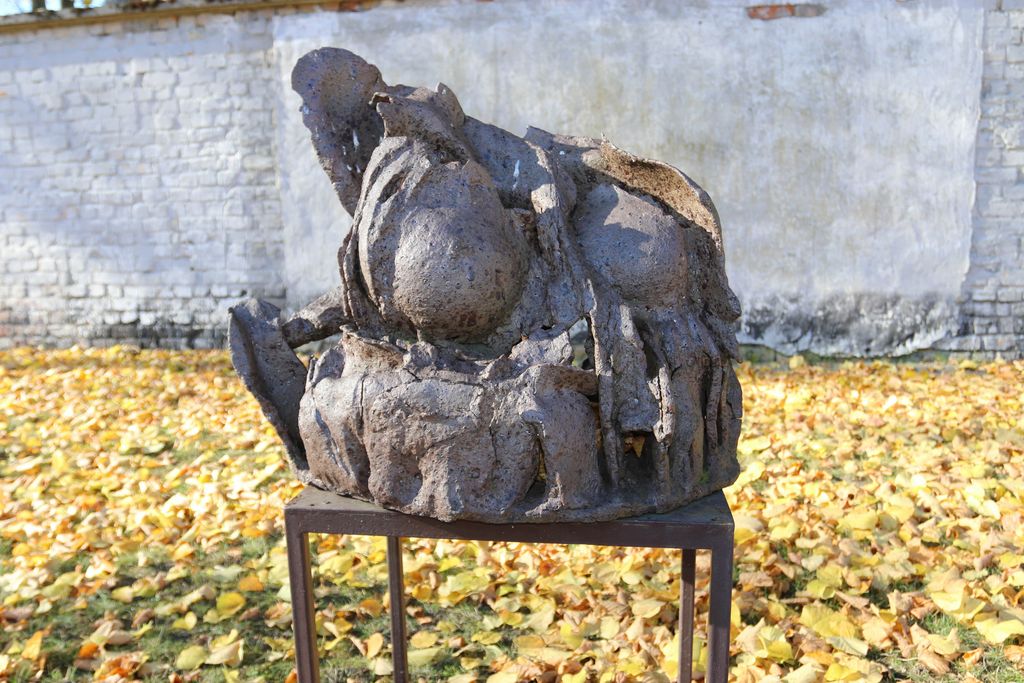Breasts of the Earth – Piersi Ziemi
1980, Glazed ceramic, 52 x 70 x 56 cm
This sculpture by Zofia Pociłowska exhibits fascinating contrasts. The smooth, emphatically round and taut female breasts stand in stark contrast to the angular and rutted torso fragment, which has an unsettling effect. Some of the deep furrows almost seem to have been violently hacked into the rounded belly. But they can also be read as ploughed furrows in a field, turned earth from which the body emerges, as indicated by the title of the work. The body appears hollowed out, almost like a vessel, and could also be an allusion to pregnancy and motherhood. The sculpture thus invites viewers to think about femininity and the female experience. The fragmentary portrayal of the body makes it impossible to identify any specific woman, but the work prompts viewers to engage with a bodily experience that is specifically female. Earth and the female body appear to be unified here—a popular motif amongst female artists of the 1970s.
Female breasts—a symbol of female sexuality and erotic aesthetics, but also motherhood—are often depicted in a sexualized way that makes them a surface for the projection of male fantasies and desires. Pociłowska breaks with these depictions. The fragmentation and the angular, jagged body desexualize the female bosom. The body is no longer a standard body, an object. It is part of a body that was once part of a whole.
Pociłowska herself said in an interview that her aim with this work was to portray the beauty she associated with the female breast. The body that surrounds the breast is the physical world. Pociłowska did not explain exactly what she meant by this, or what connections and associations she herself had or wanted to invoke.
Kirsten Leow, Gender Studies student


